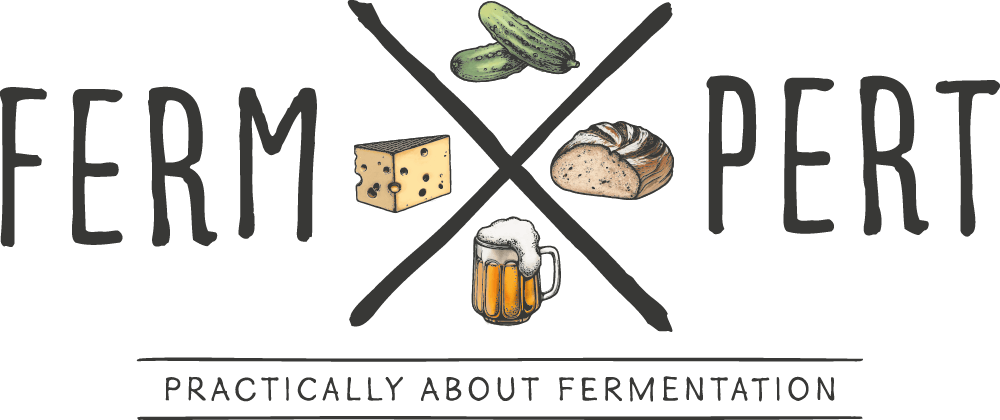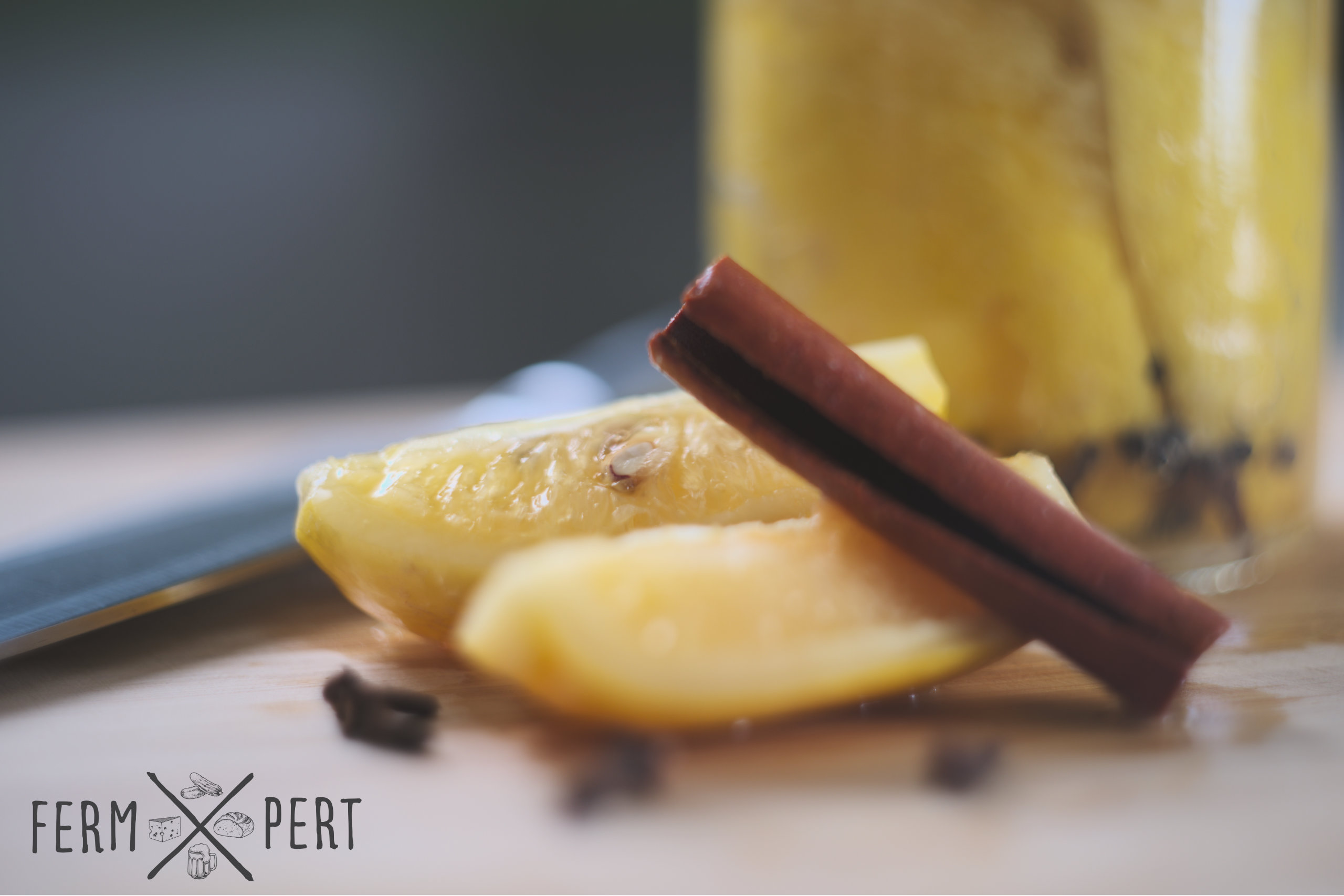Traditionally Polish fermented foods are usually the easiest to spot in my kitchen. However, this doesn’t mean that I never go abroad, even if it’s just by perusing a cookbook. Morocco was one such journey. And I’ve brought fermented lemons from it. They’re a traditional Moroccan food and and ingredient of their tagine dish.
Recipe
- fresh lemons (preferably unwaxed)
- cloves
- cinnamon sticks
- black peppercorns
- bay leaves
- salt
I intentionally omit the amounts since I alway eyeball the ingredients. The empty jars should be weighed beforehand.
Cut the ends off the lemons, then quarter the fruit. Add spices to the jars – a few cloves, a few peppercorns, a bay leaf. Next, pack the lemon wedges tightly and push a cinnamon stick between them. Press the juice of the remaining lemons and pour it over the jarred ingredients so that they’re completely submerged.
Add salt to the jars so that it’s 2-2.5% of the contents’ mass. To do this, weigh a full jar, subtract the empty jar’s mass from the result and calculate 2 or 2.5% based on the obtained figure. It’s unnecessary to stir the salt in; it’ll dissolve by itself. Close the jars, optionally add a fermentation weight. Ferment at room temperature for a few weeks to a few months.
Video Transcription
While I happen to live in a country where fermented foods are very common, I often set out to explore the cuisines of other parts of the world. Today it’s Morocco. I’m going to prepare some fermented lemons.
In front of me I’ve got a bowl of lemons and a few other ingredients: cloves, black peppercorns, cinnamon, bay leaves and salt.
The lemons have been thoroughly washed and scrubbed with a brush to remove as much wax as possible. Organic unwaxed lemons would obviously be the best choice. I’m cutting the ends off and quartering the fruit. I find that quarters are just the right size for me when I’m adding them to salads, which is how I primarily use fermented lemons.
I grab a jar and start adding the spices. Some cloves go first, then peppercorns and a bay leaf. I then put the lemons in. I try to pack them rather tightly. It’s OK if they get a bit squeezed. The idea is to keep the cloves and peppercorns from flowing to the surface. A piece of cinnamon goes in between the lemon wedges.
When the jars are full, I prepare the brine. Instead of water, I’ll use freshly squeezed lemon juice. I top the jars with juice as I go.
All the lemons are submerged in juice, but I still haven’t added salt. In order to do this, I’ll need a scale. I know how much the empty jars weigh so I can just weigh them when they’re full. I subtract the empty jar’s mass from the obtained result and get the mass of the contents. Based on that figure, I calculate the required amount of salt to reach the target salinity. I simply toss the salt in. It’ll have plenty of time to dissolve all by itself. Finally, I add a fermentation weight and close the jar.
Here’s what the lemons look like when I’m done. They’ll ferment at room temperature for at least a few weeks. This fermentation is rather slow, possibly due to the lower than normal pH. Lemon juice is rich in organic acids: citric and malic. During the fermentation, lactic acid will also be produced.
Two weeks in and this is what I end up with. The flavours will mature over the next weeks or even months, but I’m too impatient to wait any longer.
The fermentation is still active as I can clearly hear squeaking. It’s the carbon dioxide still being released. The aroma is intense. It’s lemony, but on steroids: much stronger than that of a fresh lemon. Also, the spices are coming through, especially the cinnamon. The taste is still developing. Salt hasn’t had enough time to mellow out, but the sour citrusy flavour is very strong. The peel, with a hint of bitterness, doesn’t taste as good as the flesh on its own, but in a Moroccan tagine, or even chopped in a salad, it’ll be divine.

